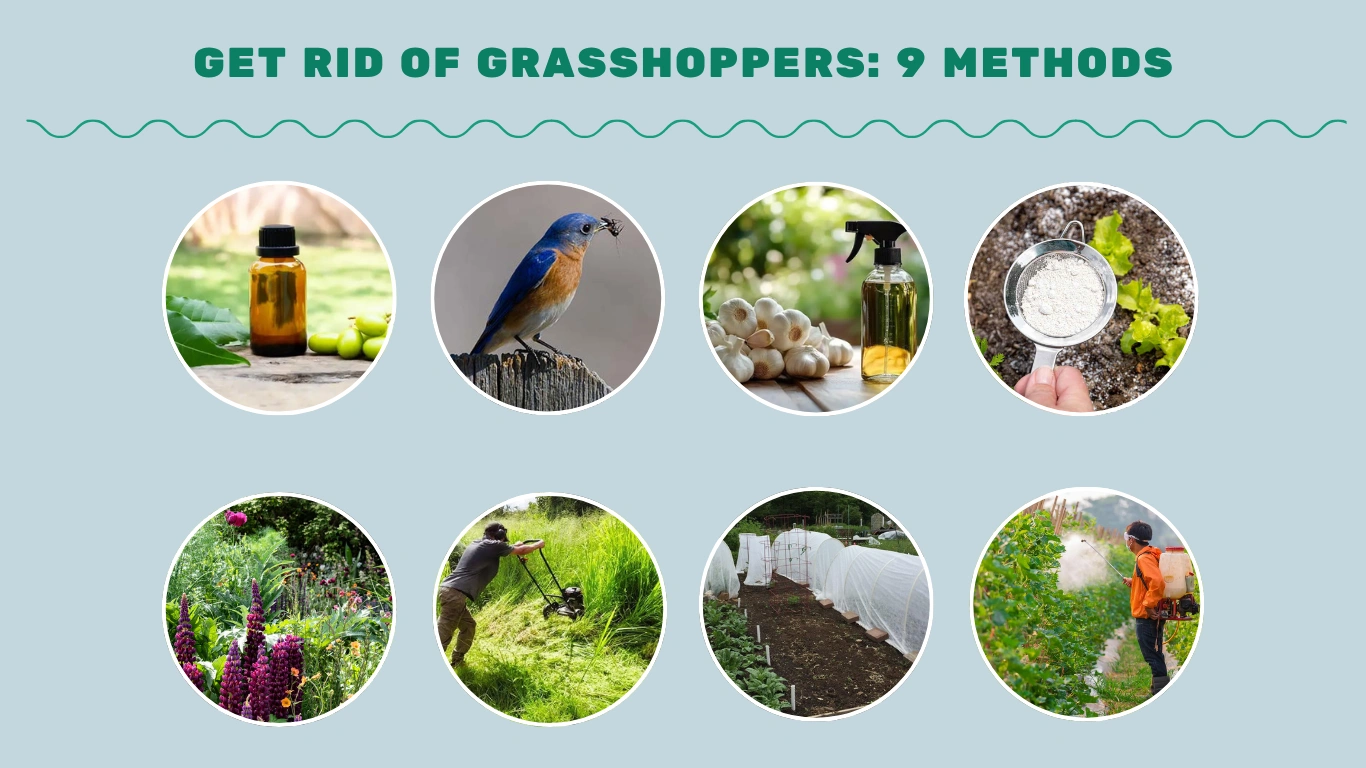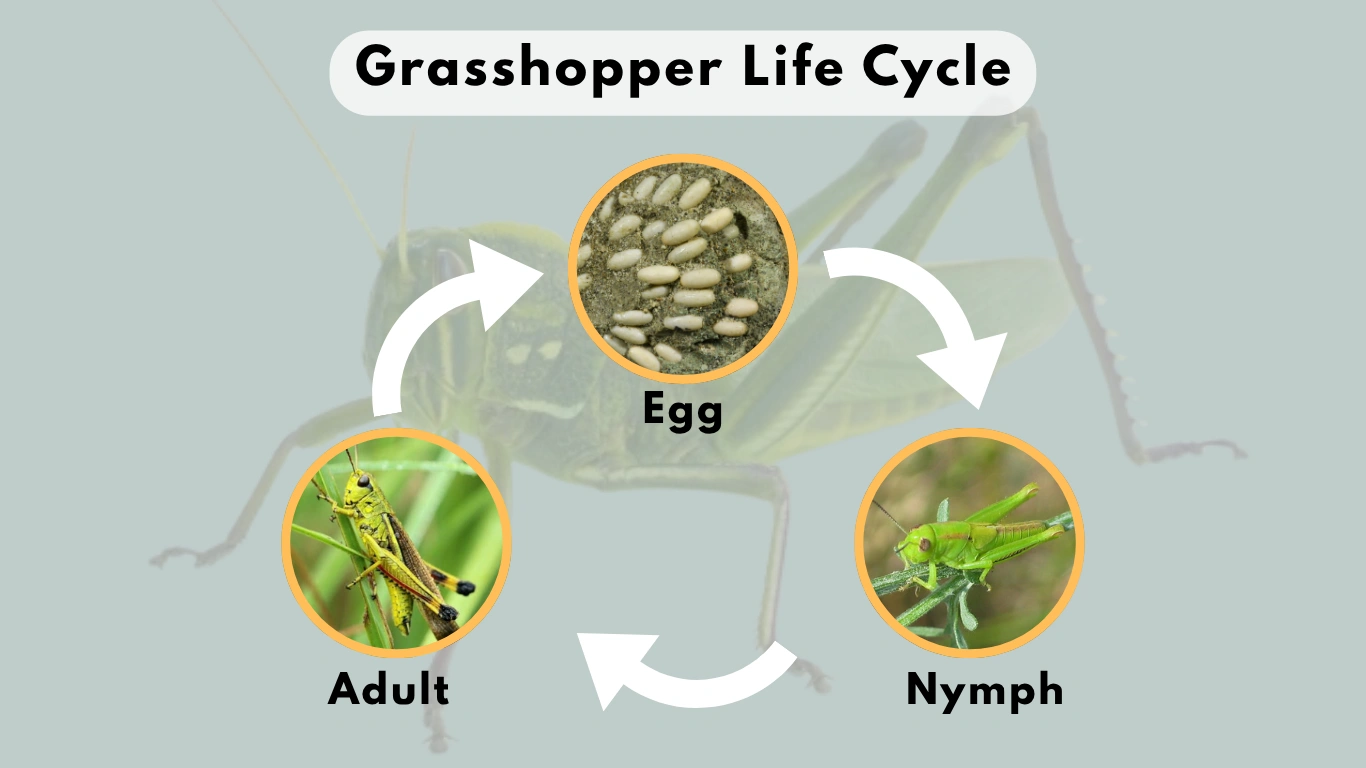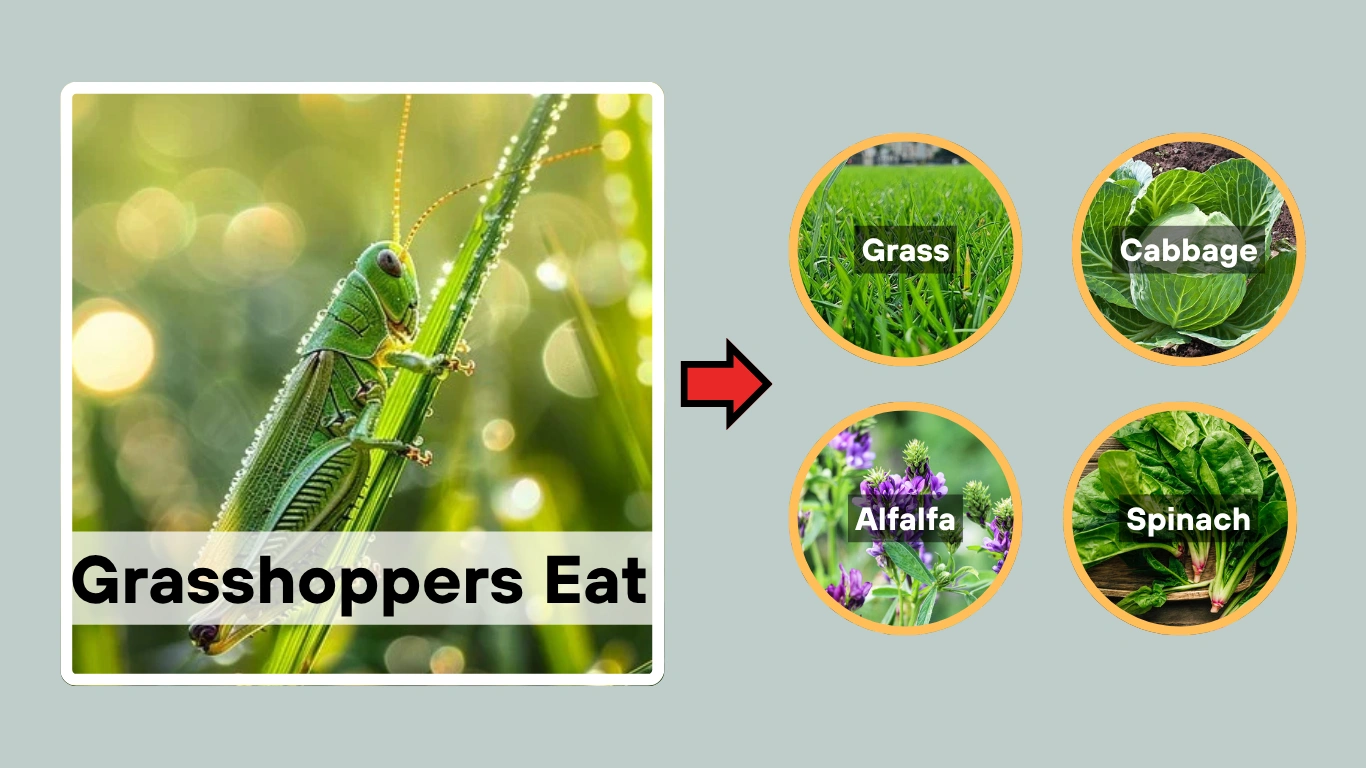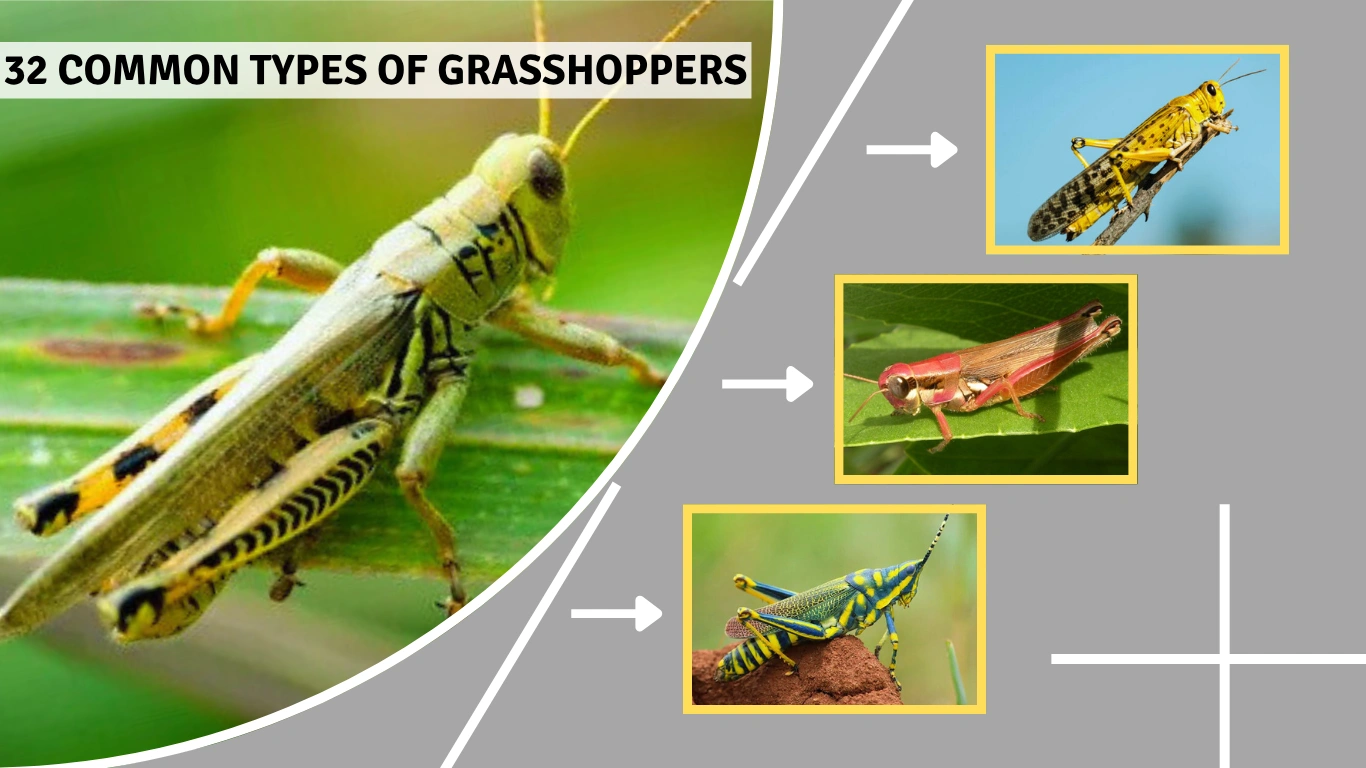Grasshoppers may look harmless hopping around your garden, but when their numbers grow, they become one of the most destructive garden pests. They chew through leaves, stems, and even flowers, leaving plants ragged and weak. A few grasshoppers might not do much harm, but a full-blown infestation can strip entire garden beds or fields bare. If you’ve noticed increasing damage to your plants, it’s time to take action. This article explores nine proven and effective ways to get rid of grasshoppers naturally, organically, and with safe chemical options when necessary.
Why Grasshoppers Are a Problem
Grasshoppers are voracious eaters. They prefer soft, green vegetation and can quickly destroy young crops or flowering plants. But what makes them even more troublesome is how quickly they reproduce and how mobile they are.
Damage to Plants and Crops
Grasshoppers have strong chewing mouthparts that let them slice through leaves, flowers, vegetable stems, and grasses with ease. They tend to feed during the daytime, especially in sunny areas of your garden. In high numbers, they can:
- Skeletonize leaves
- Strip entire rows of vegetables
- Kill young plants outright
For gardeners and farmers, this isn’t just frustrating—it’s a threat to food supply and income.
Rapid Reproduction
Female grasshoppers lay eggs in the soil during late summer and early fall. These eggs hatch in spring, producing nymphs that grow quickly through multiple molts. Since one female can lay up to 100 eggs, populations can skyrocket in just one season if not controlled.
9 Best Ways to Get Rid of Grasshoppers
Getting rid of grasshoppers requires a mix of natural solutions, environmental management, and, in extreme cases, chemical options. Here are nine methods that work well in gardens, fields, and yards.
1. Use Neem Oil Spray
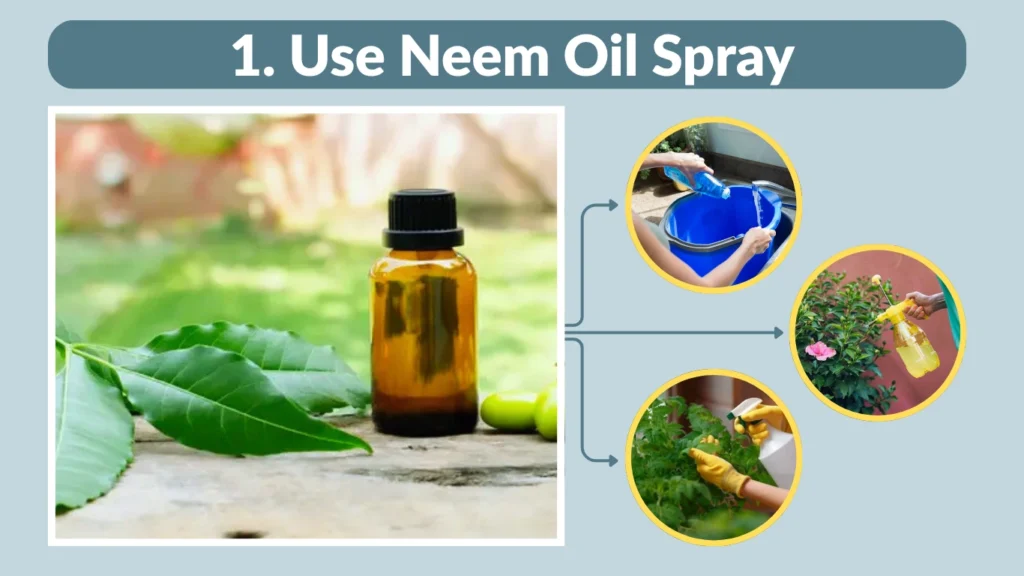
Neem oil is a natural insecticide extracted from the neem tree. It interferes with grasshoppers’ hormones and feeding habits, gradually reducing their population without harming plants.
- Mix neem oil with water and a few drops of dish soap.
- Spray directly on affected plants, especially in the morning or evening.
- Reapply after rain or every few days during an active infestation.
Neem oil is safe for most garden plants and won’t harm pollinators if used correctly.
2. Attract Natural Predators
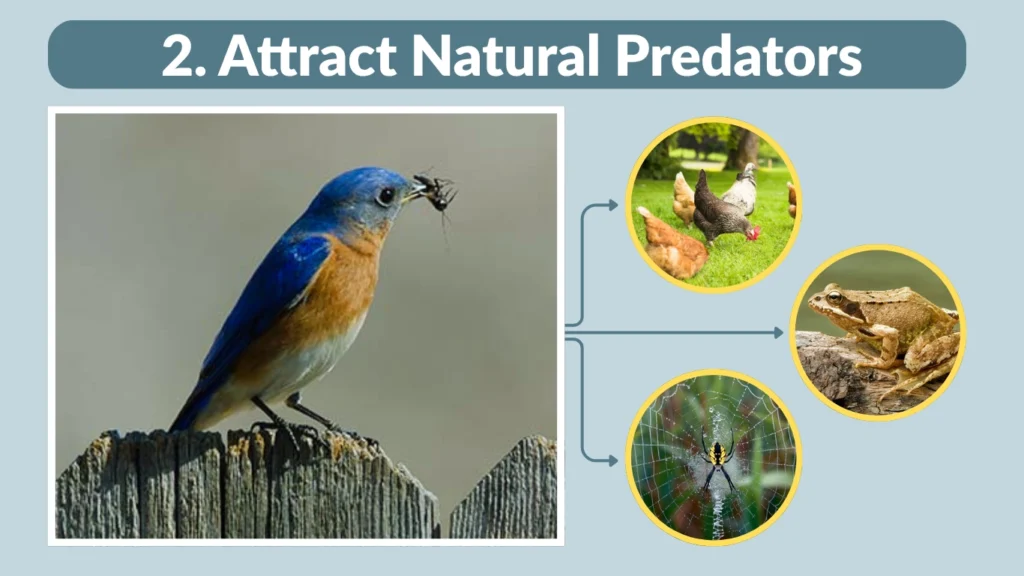
Many animals and insects feed on grasshoppers. Encouraging these predators to visit your garden can keep the grasshopper population in check naturally.
Predators include:
- Birds (especially chickens, sparrows, and blue jays)
- Frogs and toads
- Spiders
- Assassin bugs and robber flies
- Lizards
Planting hedges, installing birdhouses, and adding shallow water dishes can make your garden a predator-friendly habitat.
3. Apply Garlic or Hot Pepper Spray

Grasshoppers are sensitive to strong smells and spicy compounds. Homemade repellents made from garlic or hot peppers can help deter them.
- Blend garlic cloves or hot peppers with water.
- Strain and spray on plants.
- The strong scent repels grasshoppers without harming beneficial insects.
This method is ideal for vegetable gardens and flower beds where you want to avoid synthetic chemicals.
4. Use Diatomaceous Earth

Diatomaceous earth (DE) is a fine powder made from fossilized algae. It may feel soft to us, but it’s like tiny razor blades to insects. It cuts through their exoskeleton, causing them to dry out and die.
- Dust DE around the base of plants and on leaves.
- Use only in dry conditions, as water renders it ineffective.
- Reapply after watering or rain.
This method is organic and safe for pets and humans but should be kept away from bees during flowering times.
5. Grow Grasshopper-Repellent Plants

Certain plants naturally repel grasshoppers due to their scent, taste, or chemical makeup. Interplanting these with your crops can reduce grasshopper activity.
Repellent plants include:
- Cilantro
- Calendula
- Basil
- Horehound
- Lavender
These plants not only deter pests but also attract pollinators and other beneficial insects, improving your garden’s overall health.
6. Remove Tall Weeds and Grasses

Grasshoppers thrive in tall, weedy, or overgrown areas. These provide food, shelter, and breeding grounds. By keeping your garden clean and trimmed, you reduce places for them to hide and lay eggs.
- Regularly mow grass around the garden perimeter.
- Pull weeds before they seed.
- Clean up garden debris and overgrown patches.
This approach is especially helpful in rural or field-edge gardens where grasshopper populations are high.
7. Introduce Nosema locustae (Biological Control)

Nosema locustae is a protozoan that specifically targets grasshoppers. Once ingested, it infects their digestive system and eventually kills them. It also spreads to other grasshoppers in the area, acting as a natural population control.
- Available in bait form from garden centers or online.
- Apply early in the season when nymphs are active.
- Safe for humans, pets, and non-target insects.
It takes time to see results, but this is an effective long-term solution.
8. Use Row Covers and Netting
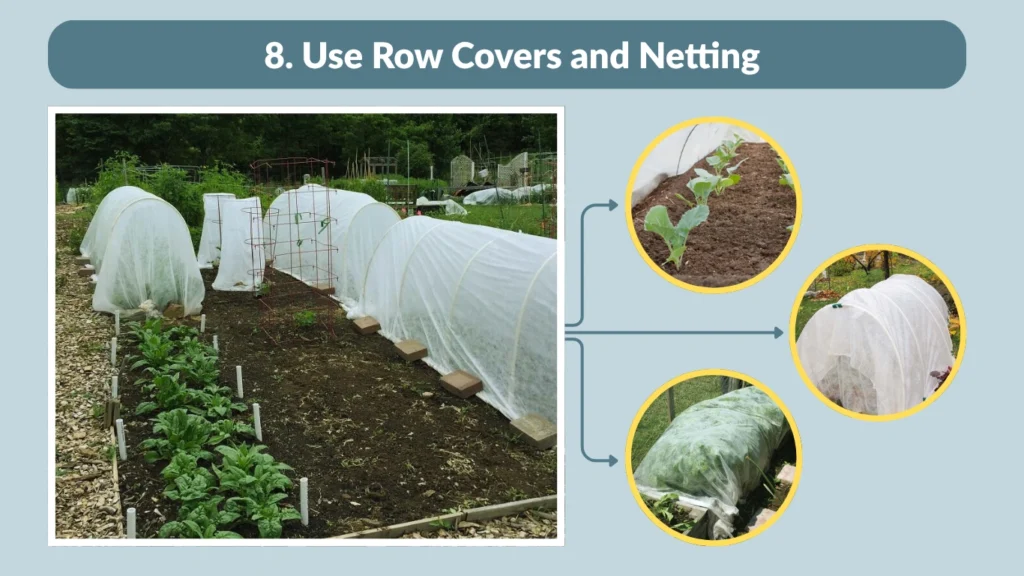
Physical barriers are an excellent option for protecting seedlings, small vegetable plants, or young flower beds from grasshopper damage.
- Lightweight row covers let in light and water but keep pests out.
- Use insect mesh or netting over vulnerable plants.
- Secure edges tightly to prevent grasshoppers from crawling underneath.
This is one of the safest methods and can be used in combination with others for full protection.
9. Apply Insecticides (As a Last Resort)
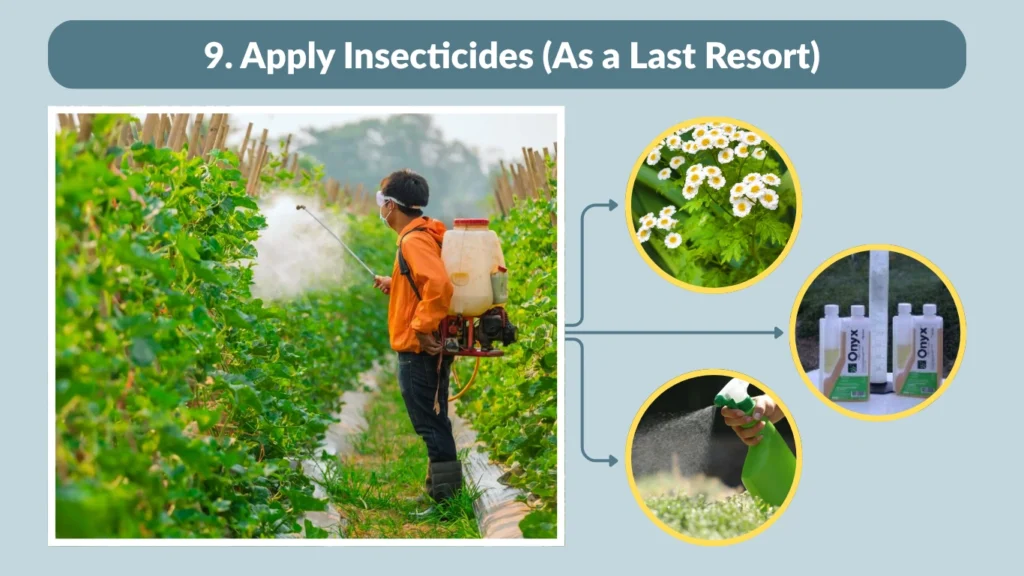
If all else fails and you’re facing a severe infestation, you may consider using a chemical insecticide. Look for:
- Pyrethrin-based sprays (derived from chrysanthemum flowers)
- Carbaryl or permethrin products (effective but harsher)
Use caution:
- Spray in early morning or late evening when pollinators are less active.
- Follow label instructions carefully.
- Avoid spraying flowering plants or water sources.
Always consider natural options first, as chemical insecticides can disrupt your garden’s ecosystem.
Long-Term Prevention Tips
Prevention is key if you want to avoid repeated grasshopper invasions each season. These long-term strategies can help maintain balance in your garden year after year.
Keep Soil Disturbed During Fall and Winter
Grasshopper eggs are laid in the soil, especially in undisturbed areas. Lightly tilling or turning the soil during fall and early spring can expose and destroy egg pods before they hatch.
Monitor for Nymphs Early in the Season
Grasshoppers are easiest to control when they’re young. Watch for newly hatched nymphs in late spring and early summer. Early intervention reduces the need for heavy treatments later.
Rotate Crops and Change Planting Times
Grasshoppers prefer certain crops and planting patterns. By changing up what you grow and when you grow it, you can disrupt their feeding and breeding habits, making your garden less attractive.
FAQs
1. What attracts grasshoppers to my garden?
Grasshoppers are drawn to lush vegetation, tall grass, and flowering plants. Overgrown areas and plenty of food sources make ideal breeding grounds. Warm, dry climates also favor their reproduction.
2. Do grasshoppers bite humans or pets?
Grasshoppers have strong jaws, but they rarely bite humans or animals. Bites are non-venomous and usually occur only if the insect feels threatened. They pose no serious harm to pets or people.
3. Are grasshoppers more common in summer?
Yes, grasshoppers are most active during late spring through summer, especially in warm and dry conditions. This is when eggs hatch and populations peak, making it the ideal time for pest control.
4. Can you get rid of grasshoppers without chemicals?
Absolutely. Many natural methods—like neem oil, predators, repellent plants, and garlic spray—are very effective. These approaches protect your garden while keeping the ecosystem healthy and pollinator-safe.
5. How do I know if grasshoppers are eating my plants?
Look for jagged holes in leaves, missing sections on stems, or completely stripped foliage. Grasshoppers often feed during the day and hide in nearby weeds or grass between meals.

